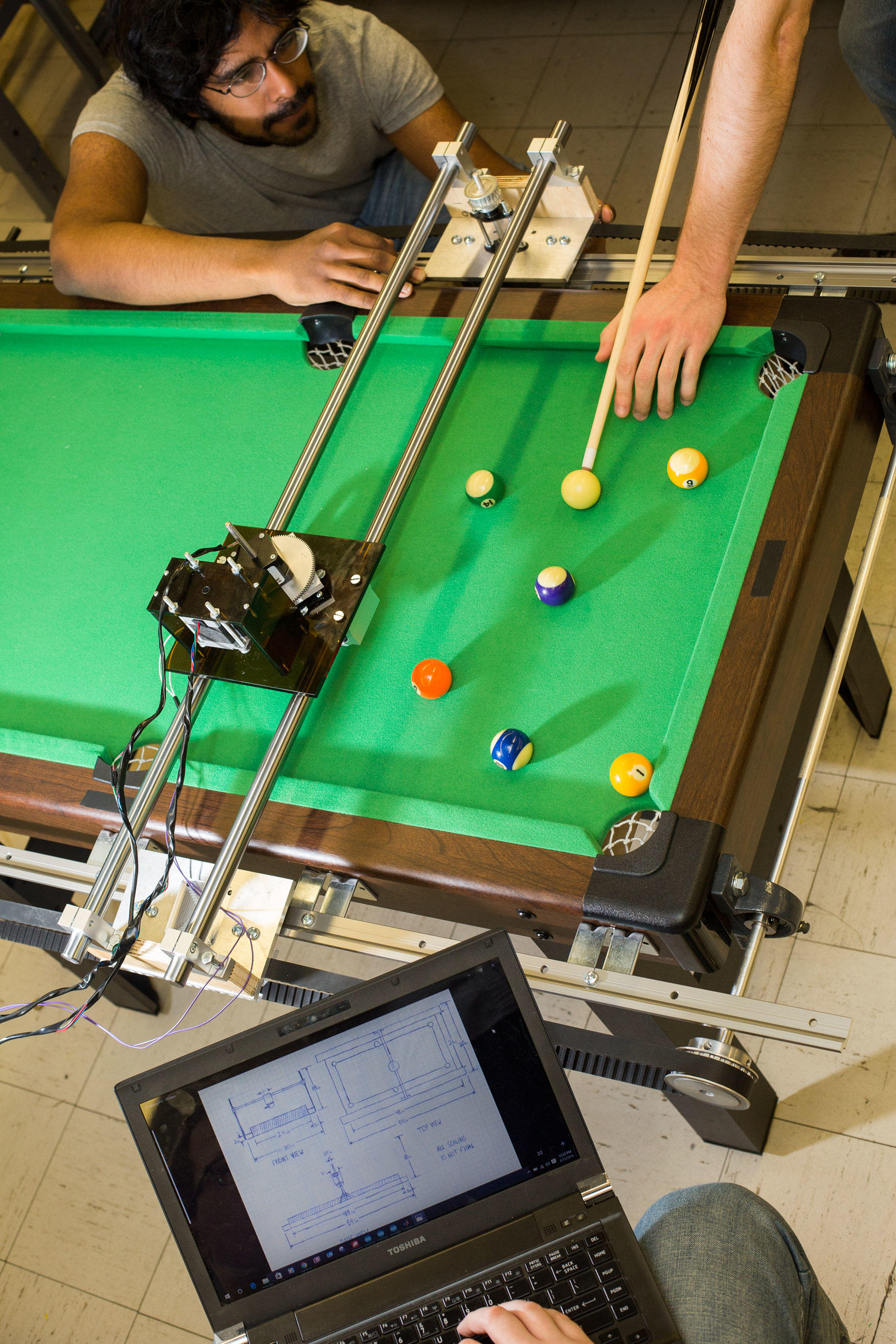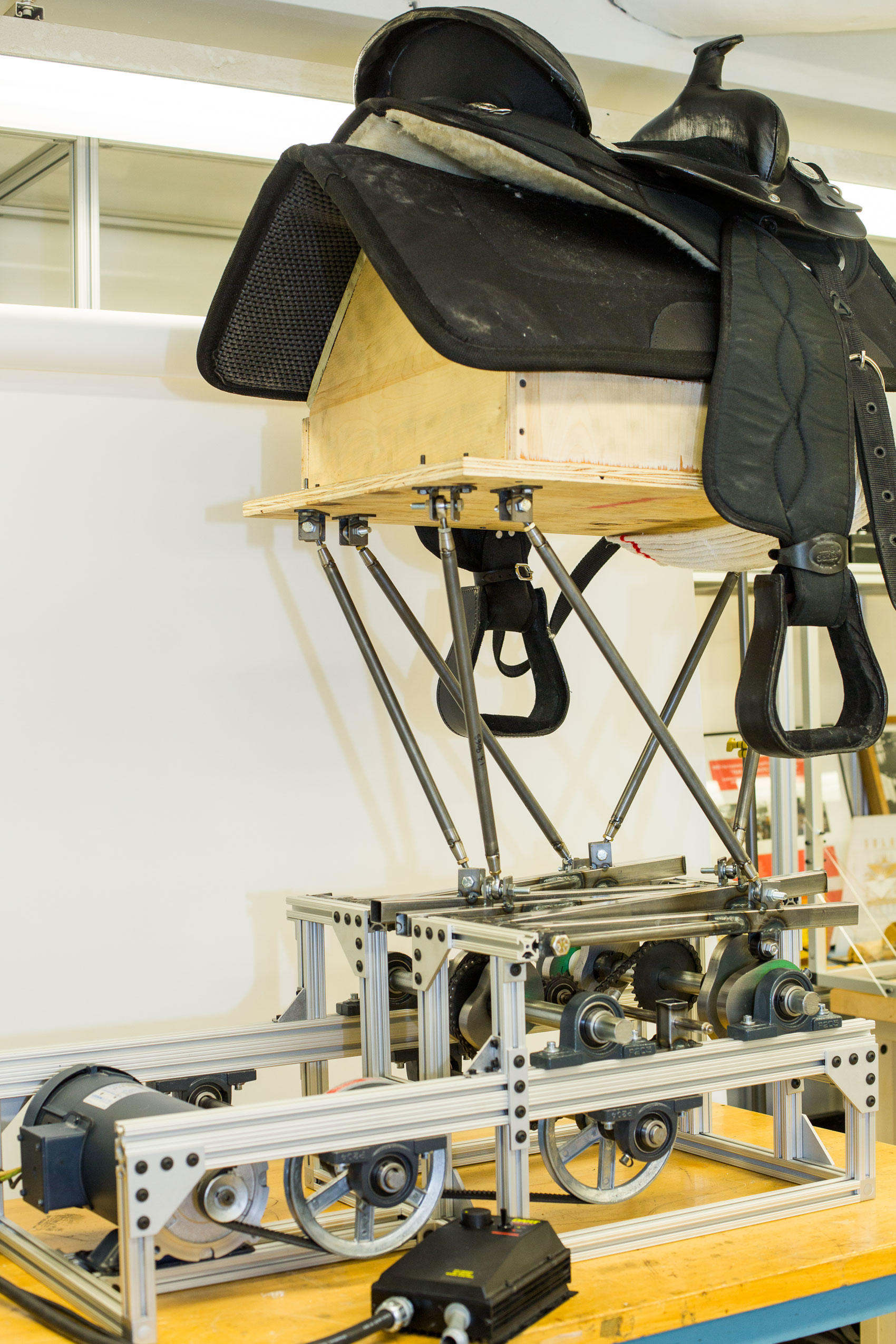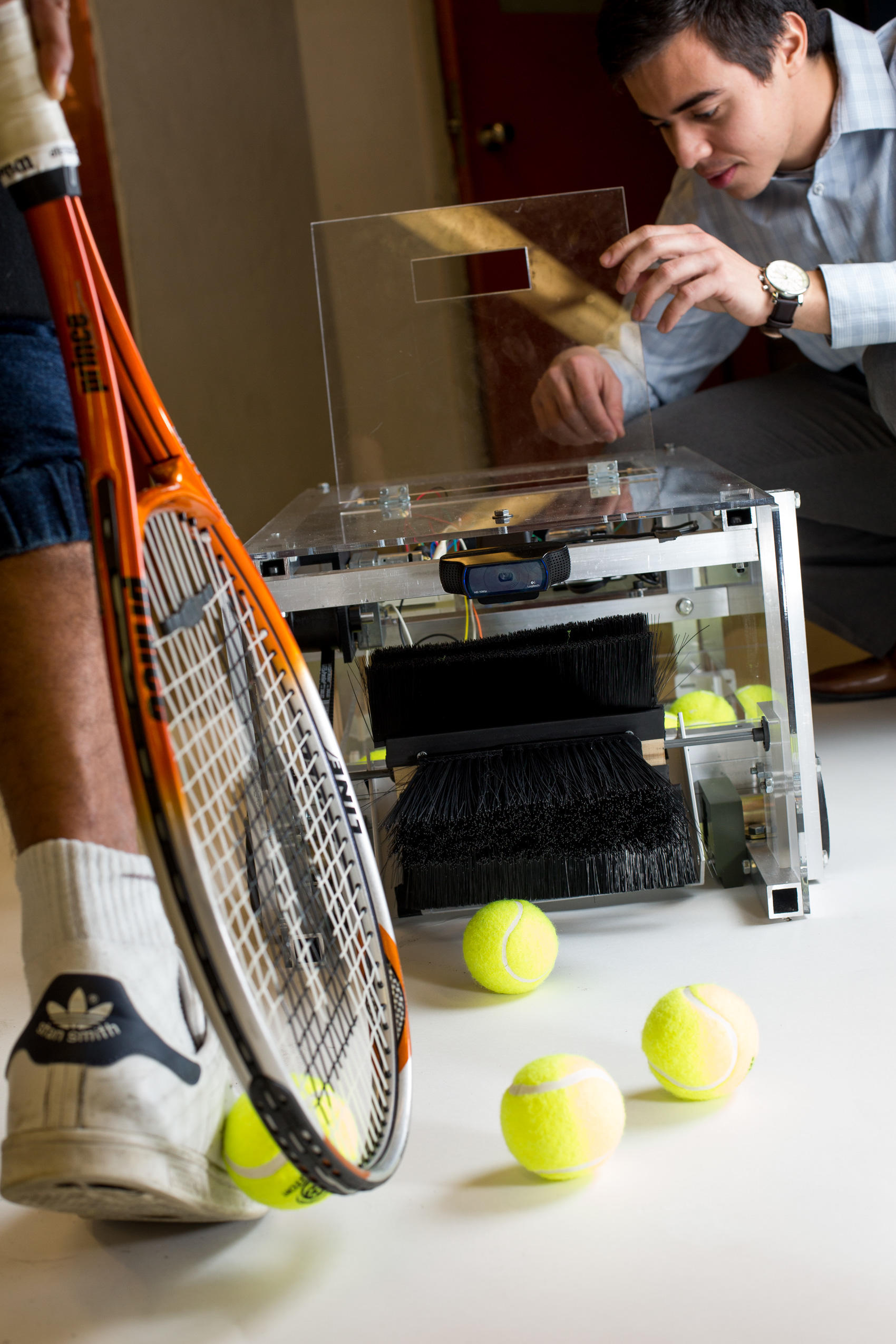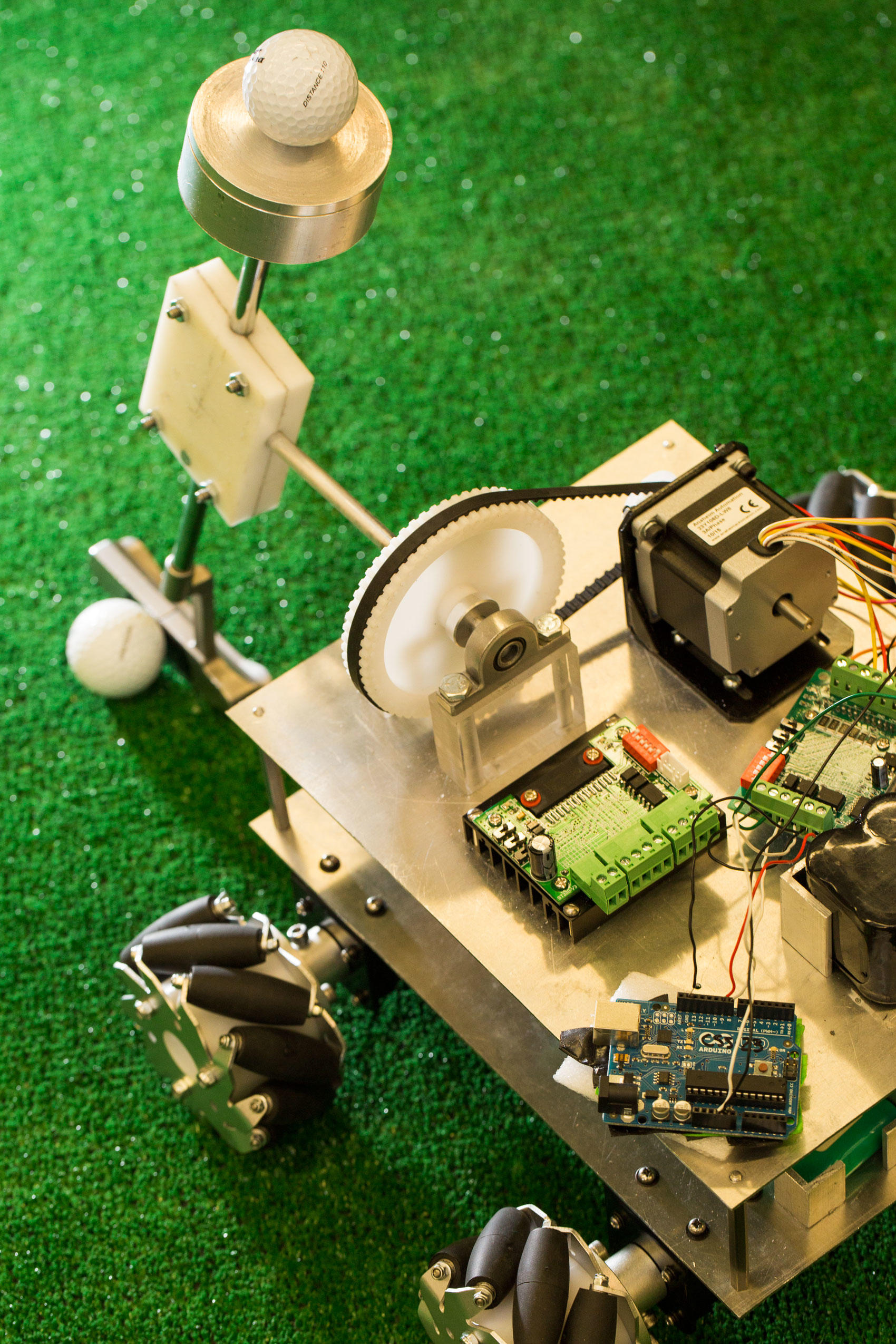On May 5, Columbia Engineering held its third annual Senior Design Expo to showcase the creativity, teamwork, and problem-solving skills of its fourth-year students. In a nod to a traditional science fair, teams of students displayed their prototypes of new medical devices, biodegradable materials, robotics technologies, game systems, bridge designs, and programming languages. Before the event, students in the school’s mechanical-engineering department gave Columbia Magazine a sneak preview of some of their more whimsical product ideas.
POOL TABLE FOR ONE
Shooting pool by yourself is no fun, especially since an essential part of the game is dealing with the mess left by your opponent’s last move. Pool sharks who want to polish their tricks in private, though, might enjoy this table designed by Stefan Boyce, John Del Latto, Amogh Kumar, Dennis Mars, and Michael Trietsch. The table is overlaid with a contraption that can compete against a human opponent. It relies on a camera positioned above the table and a computer program that analyzes the likelihood of its making various shots. With this technology, it can determine which way to whack the cue ball with a metal hammer. “It’s not capable yet of planning multiple shots ahead of time,” says Mars. “But that could come in a later version.
GIDDYUP TO FEEL BETTER
“A mechanical bull wants to throw you off and hurt you, but this guy wants to help you,” says Matthew Heartney, who, along with Claudia Moreira, Matthew Sheridan, and Kirsten Arnell, designed this rig to help improve the core strength and blood circulation of people with conditions like cerebral palsy or muscular dystrophy. Horseback riding is a commonly prescribed form of physical therapy for people with a variety of ailments, and with this invention patients wouldn’t have to travel to a special ranch to ride. “The machine’s movements are based on our computer analysis of how real horses walk,” says Heartney. “It would be a pleasure in the saddle, nice and gentle.”
TENNIS ROOMBA
Imagine what a great tennis player you would be if all the time you spent collecting loose balls strewn around the court were devoted instead to perfecting that backhand. Now with the assistance of a self-propelled ball collector invented by Gerardo Cervantes, Devon Harvey, Eric Simmons, and Nicholas Sun, you can focus on improving your form rather than filling your basket. The device has a webcam that can spot tennis balls that have rolled to a stop. It then uses an open-source computer program to orient itself toward the balls, finally sweeping them up with a bristle-wheel brush. Says Cervantes: “One of the tricky parts was getting it to recognize tennis balls specifically, so that it’s not collecting anybody’s cell phone.”
PERFECT PUTTER
Golfers cannot blame their equipment, so goes the adage. But what if the golfer is the equipment? Turki Alrashed, Andrew Arrendondo, Spencer Hobson, and Rebecca Stussman are confident that their robotic putter won’t be missing many shots — so long as it’s swinging at a ball within a few feet of a hole on a perfectly flat green. “We designed it mainly to demonstrate our ability to combine multiple technologies in one robot,” says Sussman, who explains that her team’s putter uses a camera to locate a golf ball and numerous computer programs to gauge the ball’s distance from the hole and to hit it. “It’s a fun way to show off what we’ve learned — and that’s what the Design Expo is all about.”






